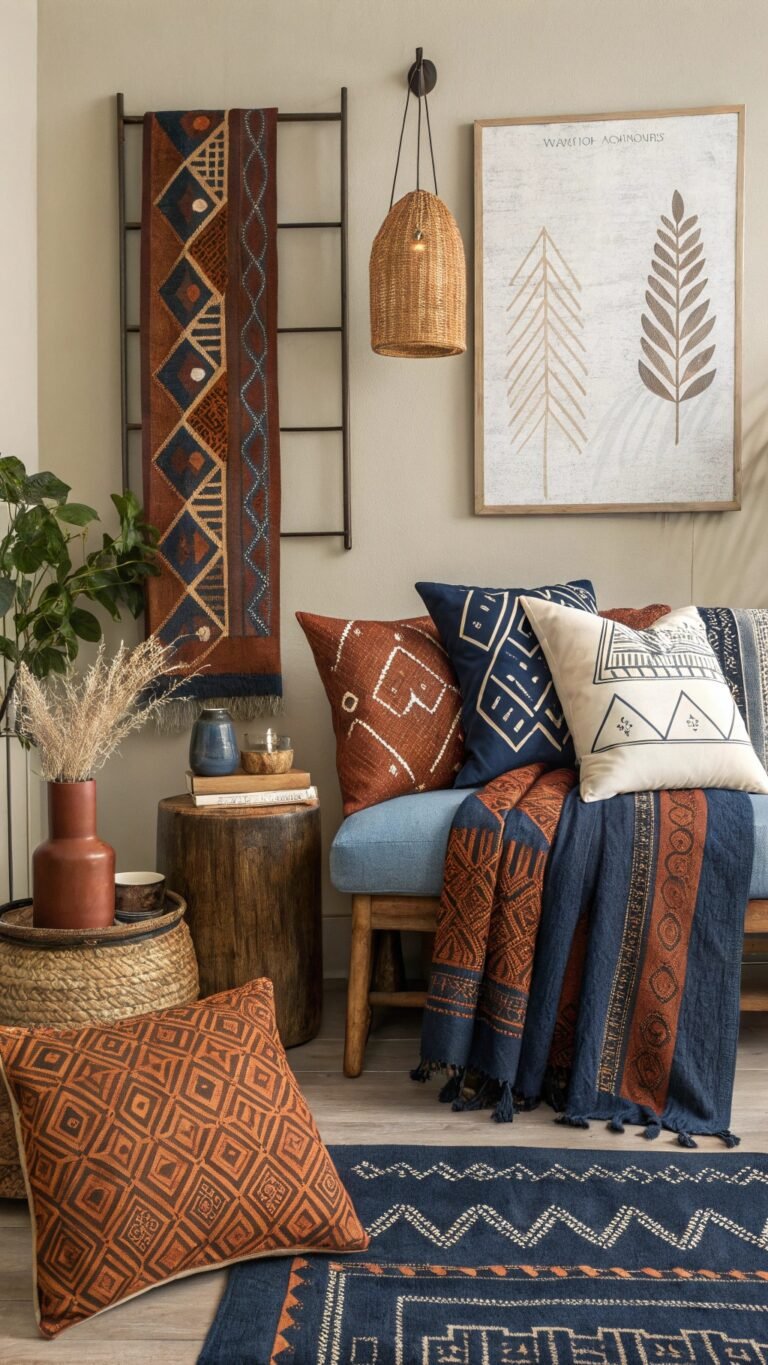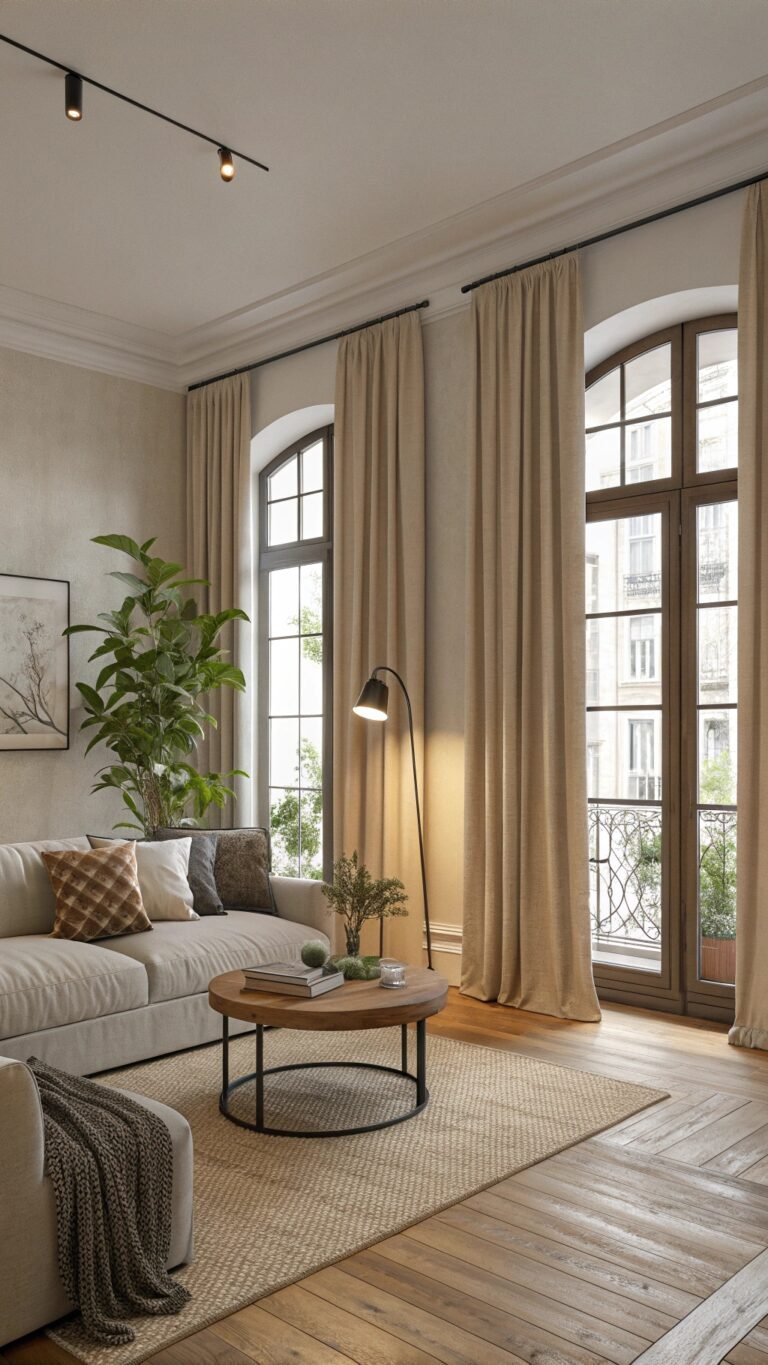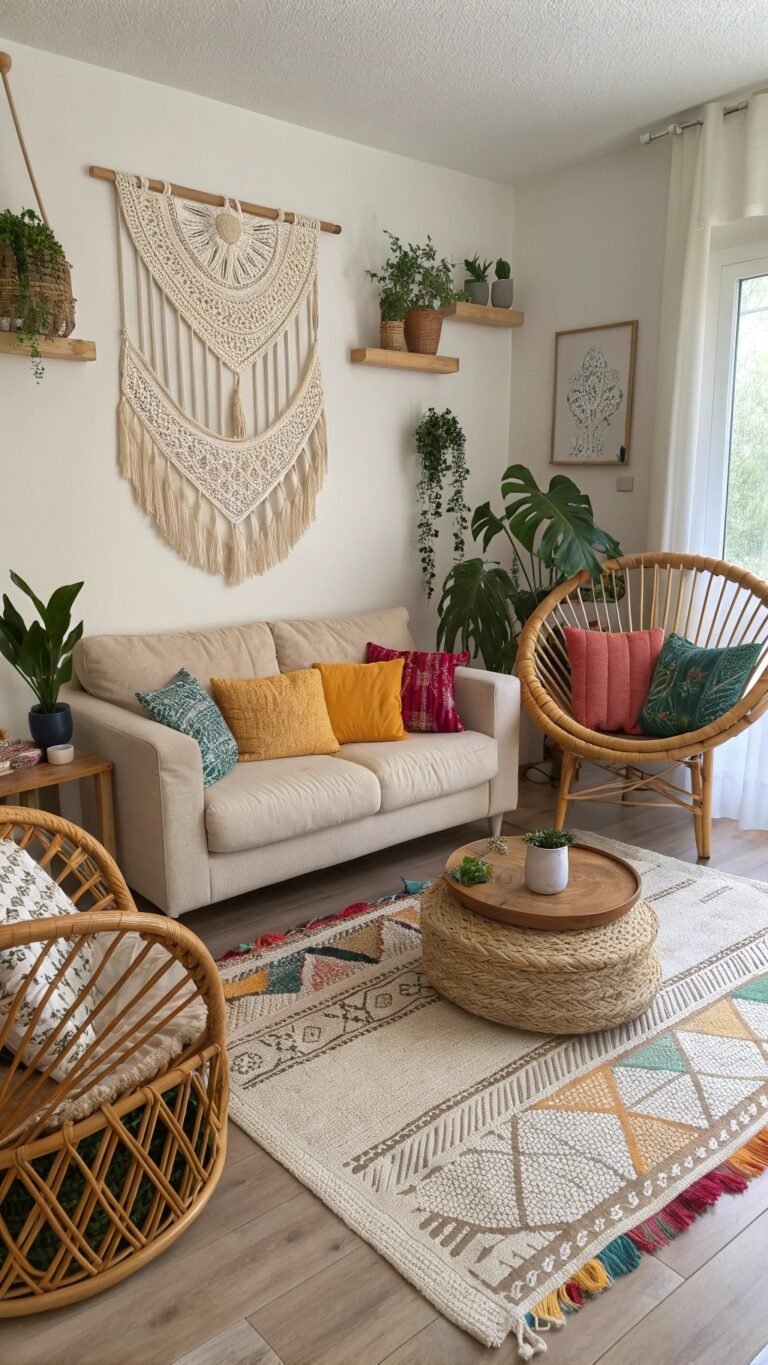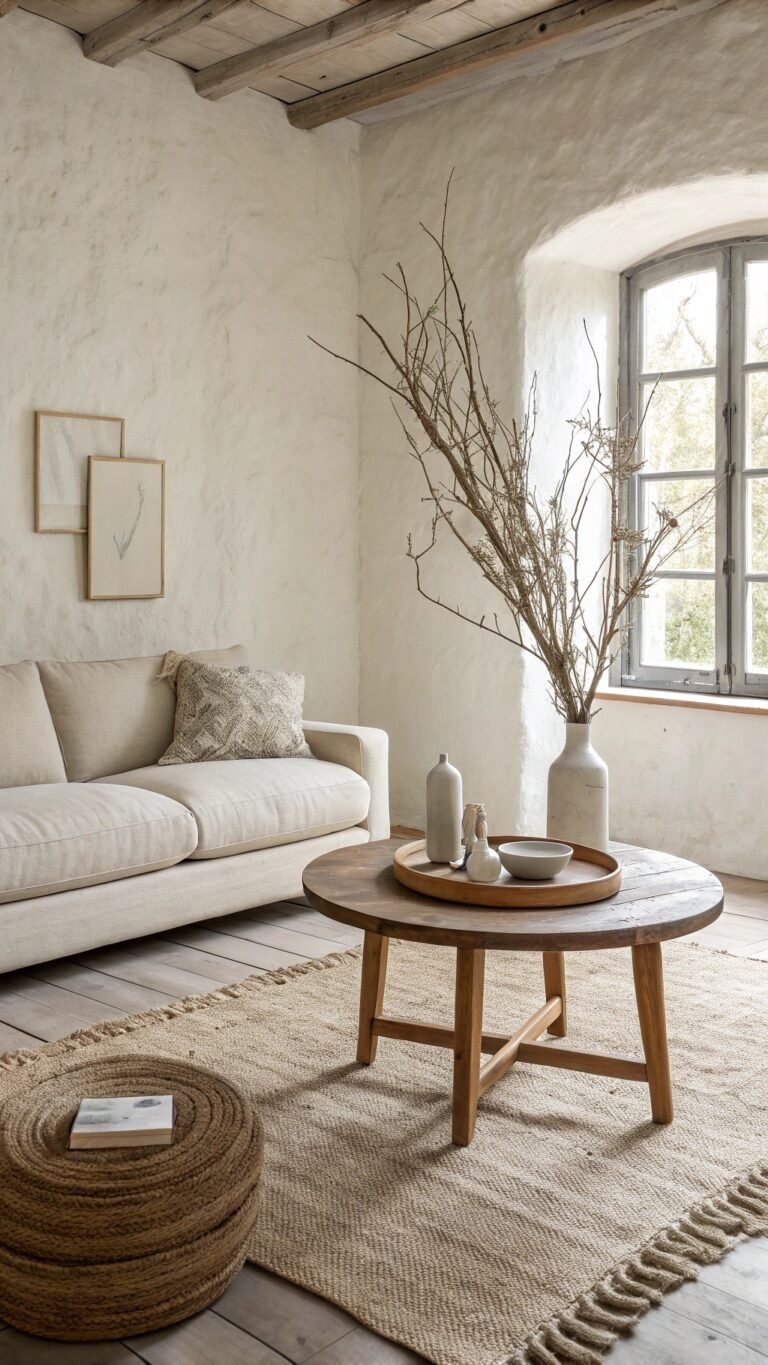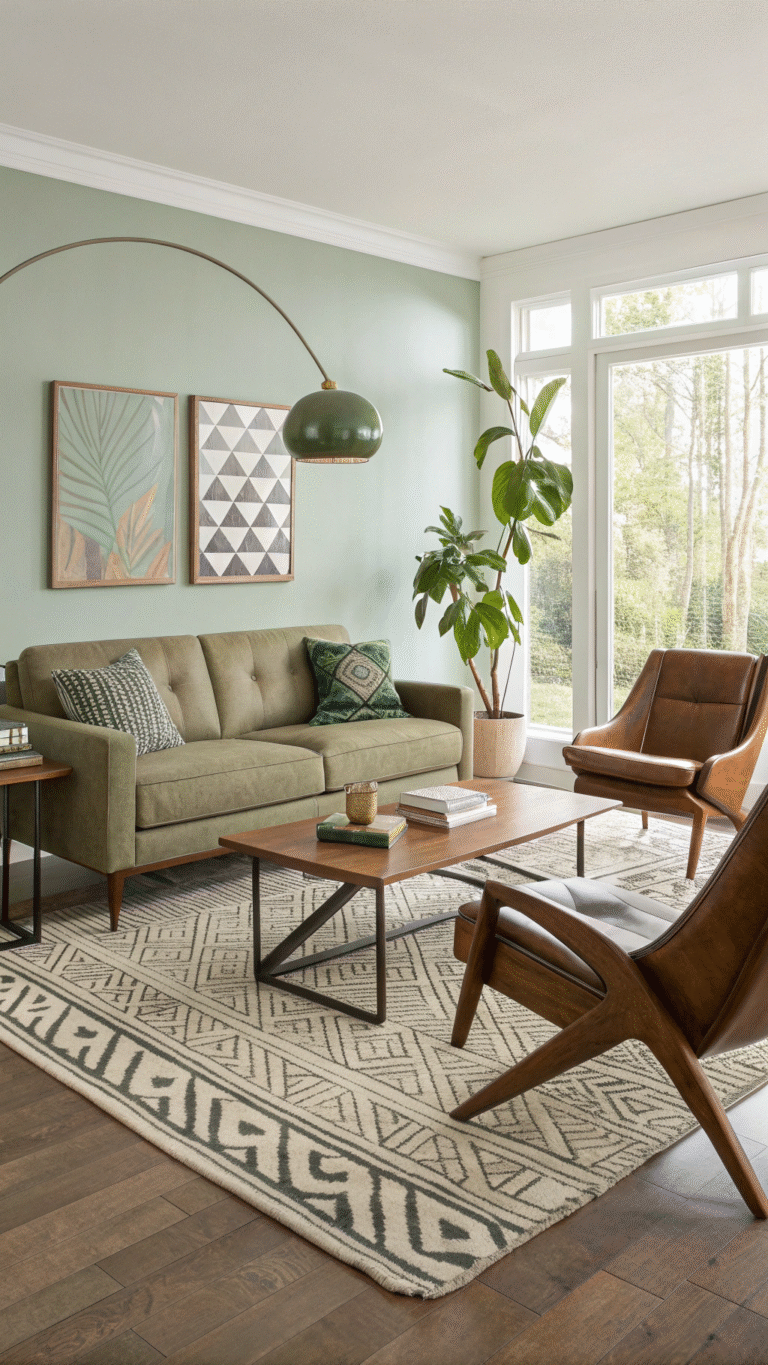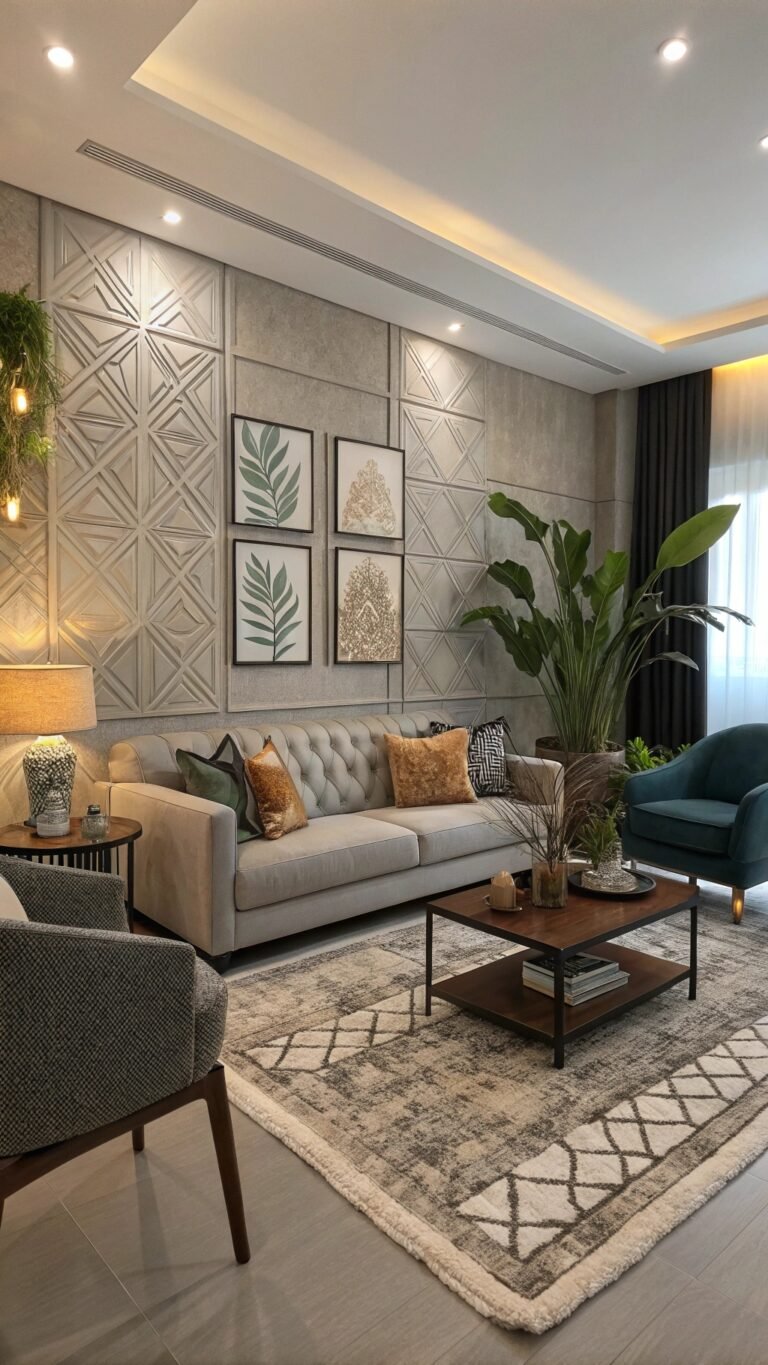Minimalist Living Room: 15 Calm, Edited Ideas That Still Feel Warm
Minimalist living room style is rising because it delivers instant calm without expensive renovations. By editing furniture, tightening palettes, and letting light and texture do the work, small tweaks feel transformative.
Designers favor low silhouettes, hidden storage, and layered neutrals—spaces that photograph beautifully and actually support real life, not clutter.
1) Quiet Neutrals & Negative Space
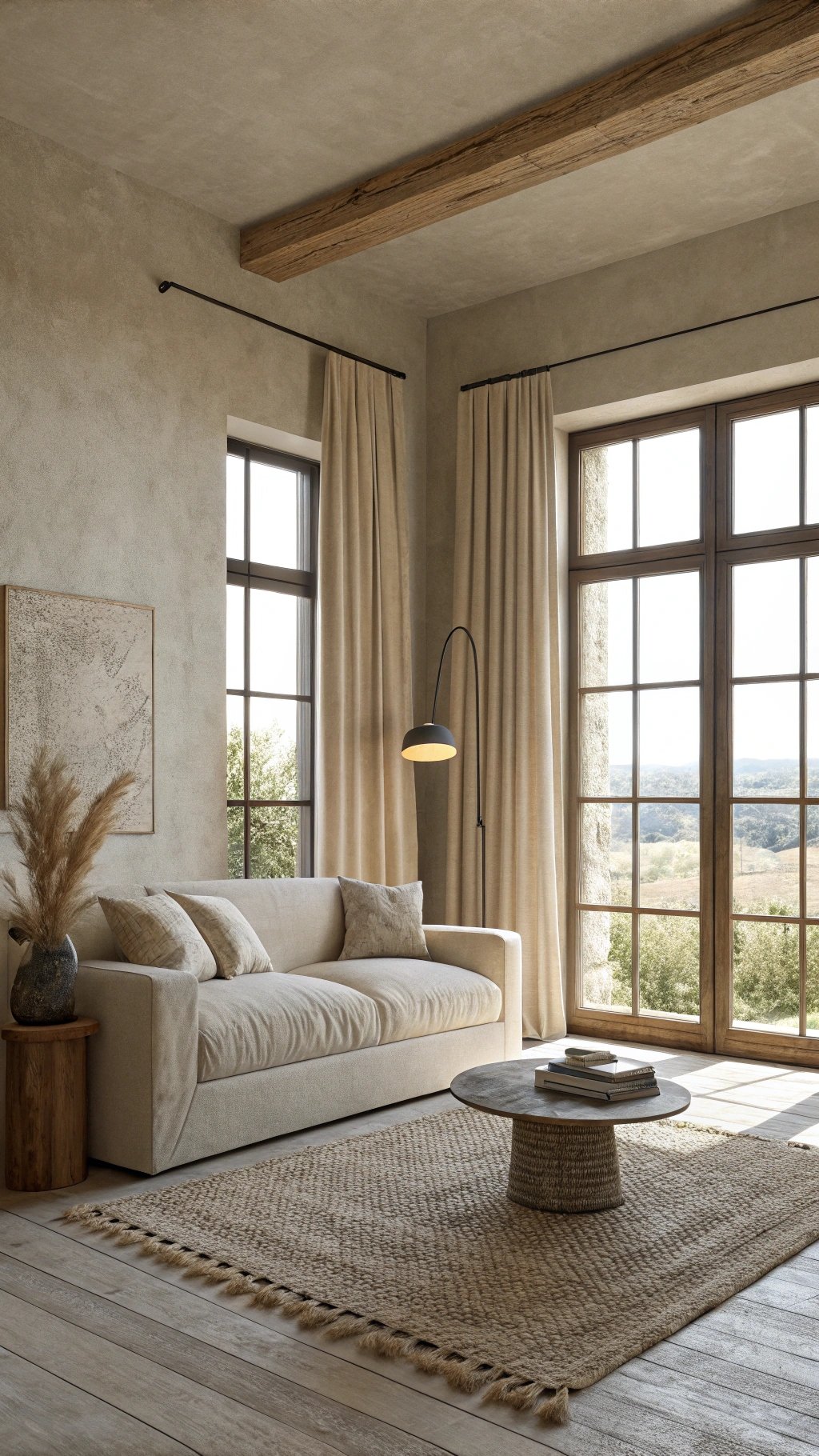
Keep the palette intentionally narrow—bone, oat, warm white—so the eye can rest. Start with a deep, low sofa, a wool or jute rug sized to frame seating, and linen curtains that just kiss the floor.
Limit surfaces to a stone tray, two books, and one sculptural object. With fewer pieces, circulation improves and proportions feel intentional rather than sparse.
What makes something unique:
Vary sheen inside the same color family: matte walls, soft-lustre ceramics, and a subtle satin on lamp bases. Add one textural hero—bouclé, heavy linen, or wool—to give depth without pattern.
The disciplined neutrality prevents visual fatigue, photographs elegantly across seasons, and turns everyday resets into a quick, satisfying ritual.
2) Japandi Low-Profile Calm
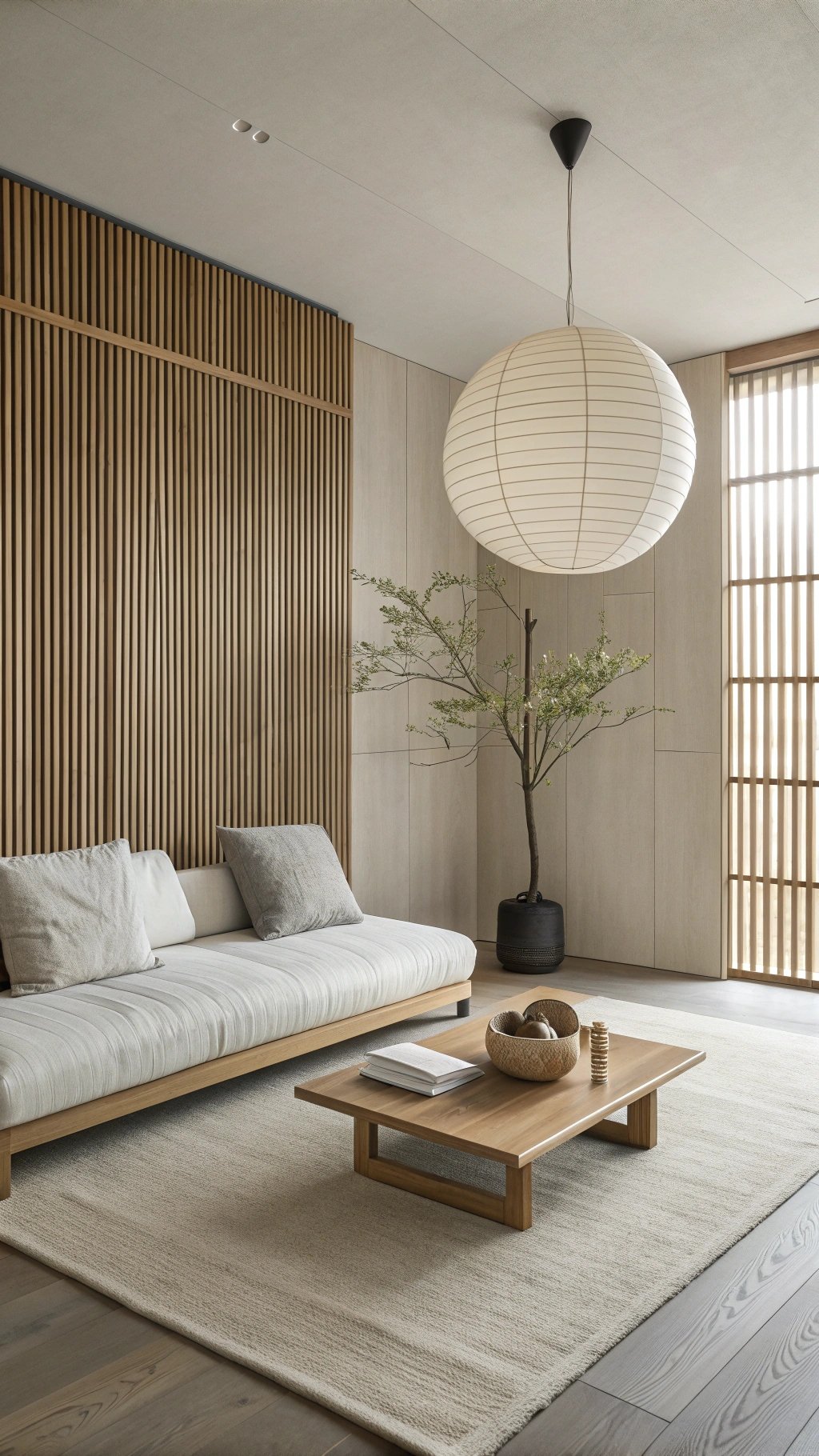
Blend Japanese restraint with Scandinavian warmth: a low platform sofa, pale wood tables, and gauzy linen sheers.
Surfaces stay mostly clear—one branch in water, a short stack of books, and a ribbed ceramic vessel. Negative space is part of the composition, encouraging slower movement and quiet conversation.
What makes something unique:
Use gentle radiuses on corners and a paper-lantern pendant at ~3000K for flattering evening light. A slatted-wood feature behind the sofa introduces rhythm without pattern.
The soft geometry and honest materials feel timeless, camera-ready, and easy to maintain, proving minimal doesn’t have to mean cold.
3) Monochrome with Warm Accents
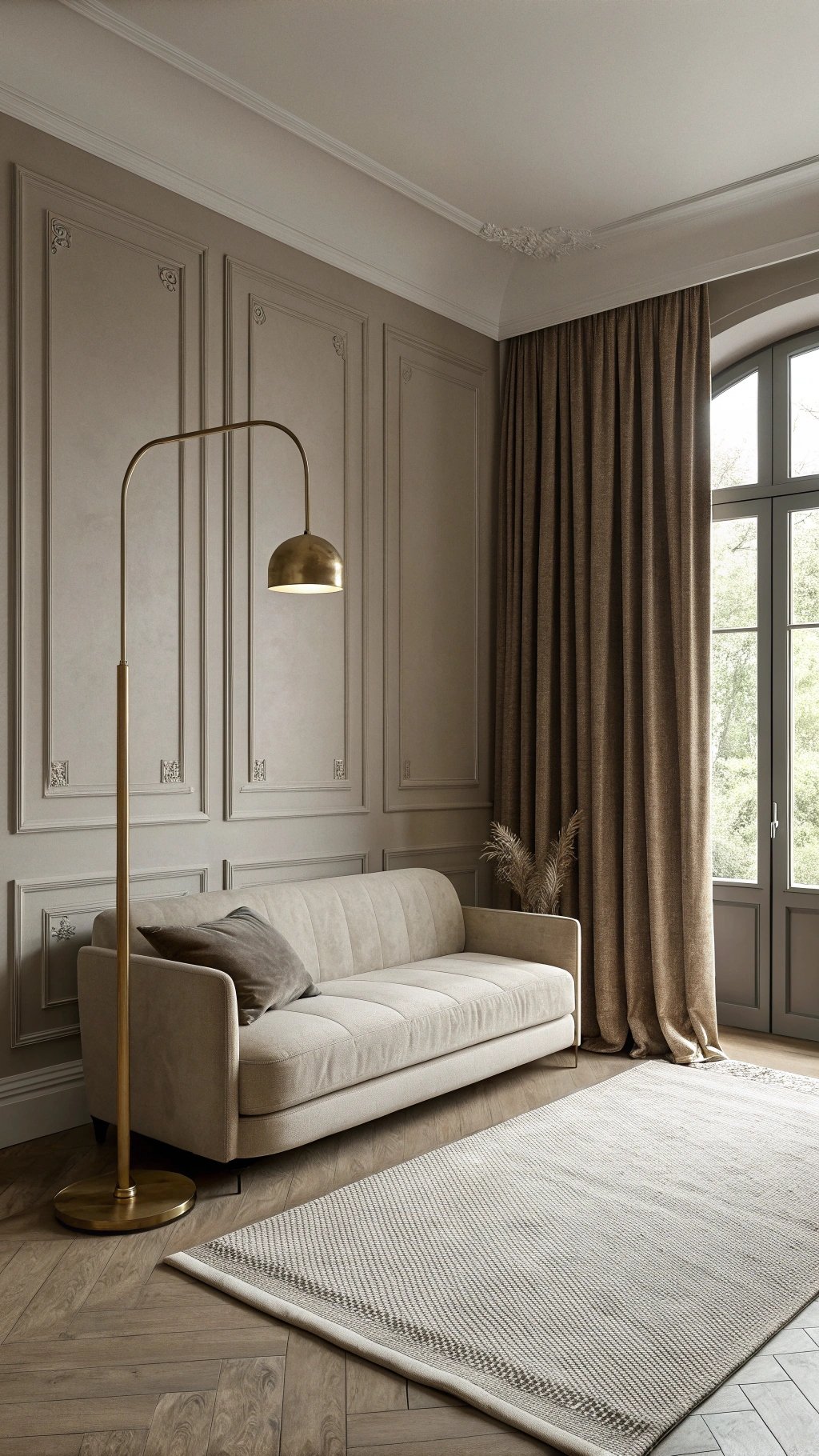
Choose one hue—mushroom, greige, or charcoal—and run it across walls, drapery, rug, and major upholstery.
Keep contrast low for a cocooned feel, then introduce a single warm metal (brushed brass) in three small hits: floor lamp, frame, picture light. Monotone calms the room while metal “glazes” highlights like jewelry.
What makes something unique:
Mix textures within the color family—linen sofa, wool rug, velvet cushion—so the scheme never falls flat. Hide cords and select matte finishes to avoid glare.
The restrained sparkle and tonal layering create depth that reads luxurious while remaining practical for daily living.
4) Curved Silhouettes
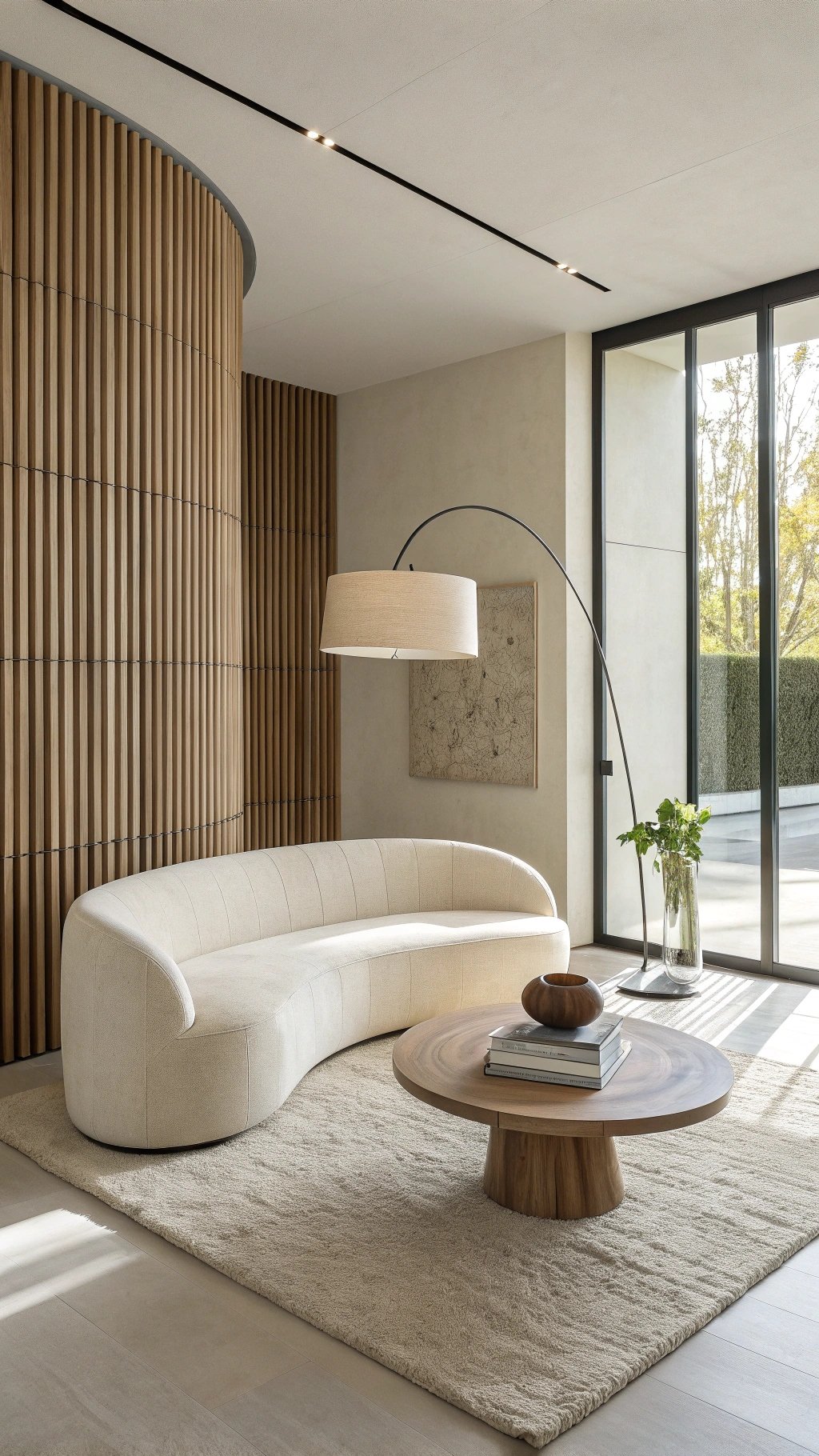
Trade sharp angles for gentle arcs that relax the eye and improve flow. A radius sofa, round coffee table, and mushroom-shade lamp soften corners and invite conversation.
Curves visually “pull” pieces together, allowing tighter furniture placement without feeling cramped—especially helpful in small or open-plan rooms.
What makes something unique:
Echo the curve three times—sofa, table, lamp—to create cohesion. Balance the softness with one linear backdrop, such as slim vertical paneling or a flat-front console.
The interplay keeps the room modern rather than whimsical and adds a welcoming, tactile quality to minimal decor.
5) Texture-First Minimalism (Limewash + Linen)
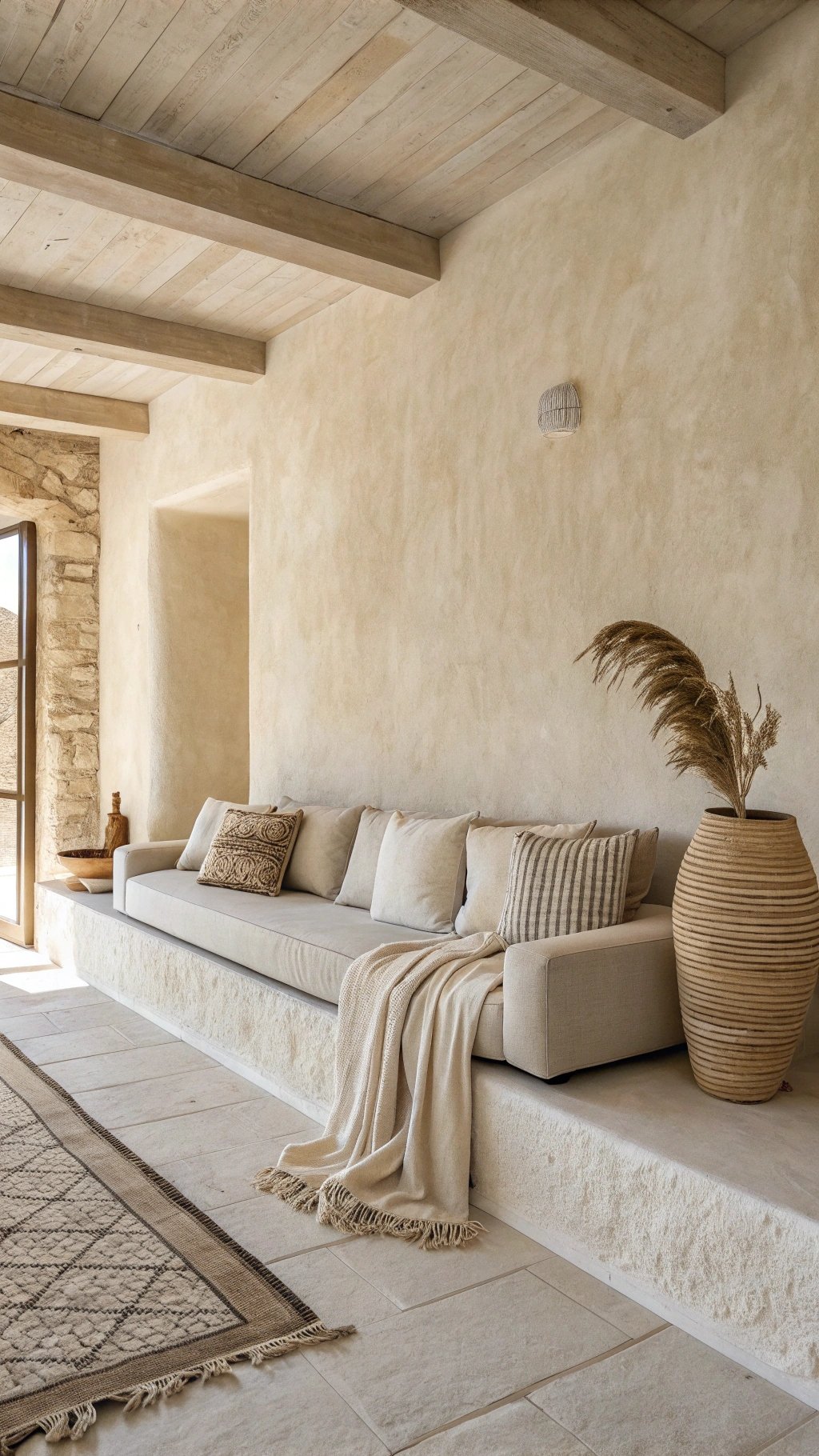
When pattern is dialed down, texture can sing. Limewashed walls introduce soft movement, while heavy linen upholstery and wool throws add depth without noise.
Choose a plaster or microcement side ledge instead of a bulky table to keep lines uninterrupted and quick to clean.
What makes something unique:
Finish discipline is everything: matte, porous surfaces that age well and reduce glare. Add ribbed ceramics and a stone tray for a tactile trio.
The result is quiet luxury—forgiving of daily life, soothing under evening light, and beautiful in photos without looking staged.
6) Built-Ins Flush to the Wall
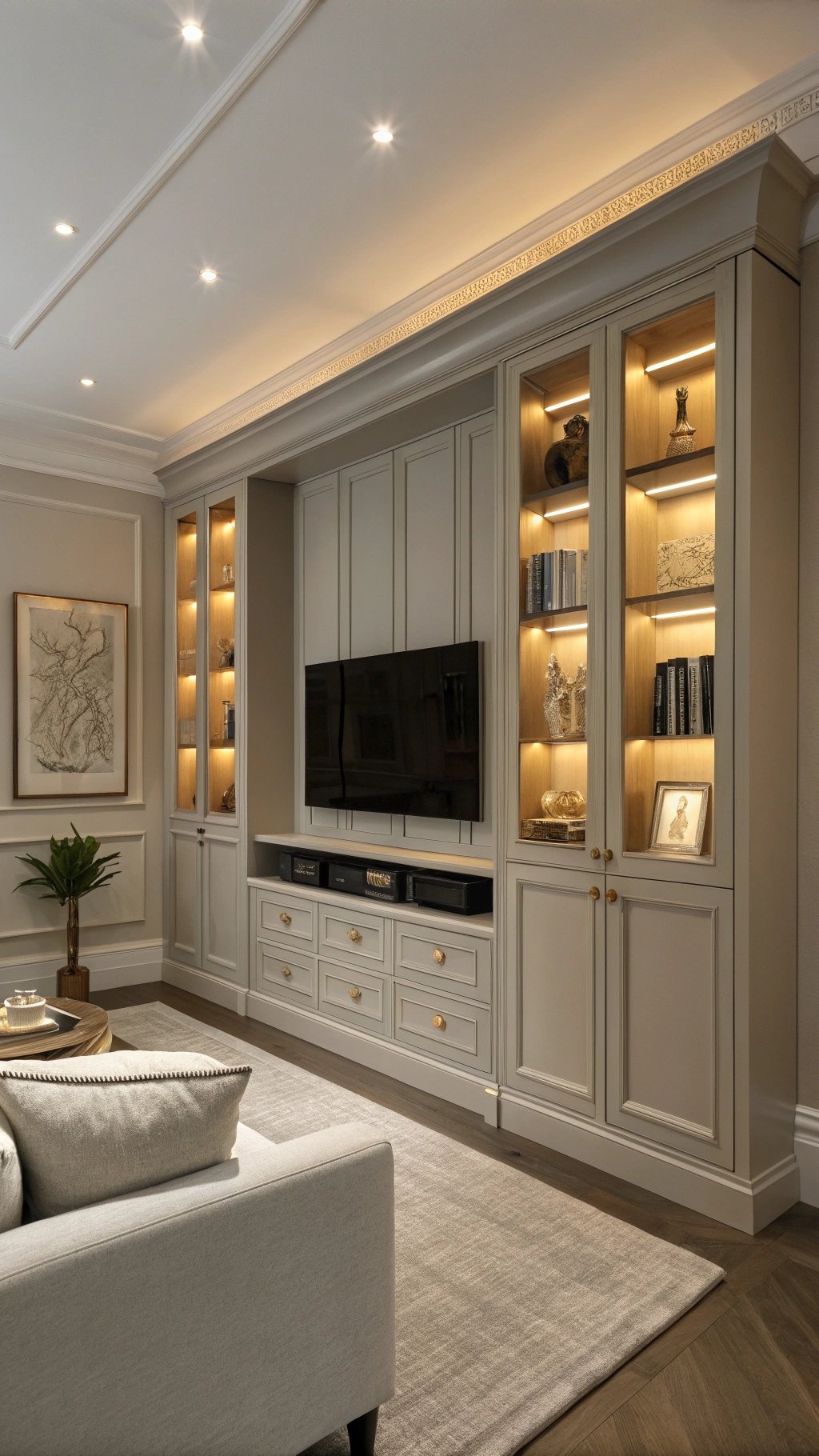
Turn one wall into a calm plane with floor-to-ceiling storage and integrated pulls. Inside, use adjustable shelves and hidden drawers so a separate media unit or dresser becomes optional.
Color-match the facade to the walls so storage reads like architecture, not bulk.
What makes something unique:
Add shelf LEDs and a concealed bar or media niche behind pocket doors for a reveal moment that disappears on command. Toe-kick lighting provides night paths and a floating effect.
The wall becomes the backbone of the room, keeping surfaces clear and the mind quieter.
7) Floating Storage & Wall Lamps
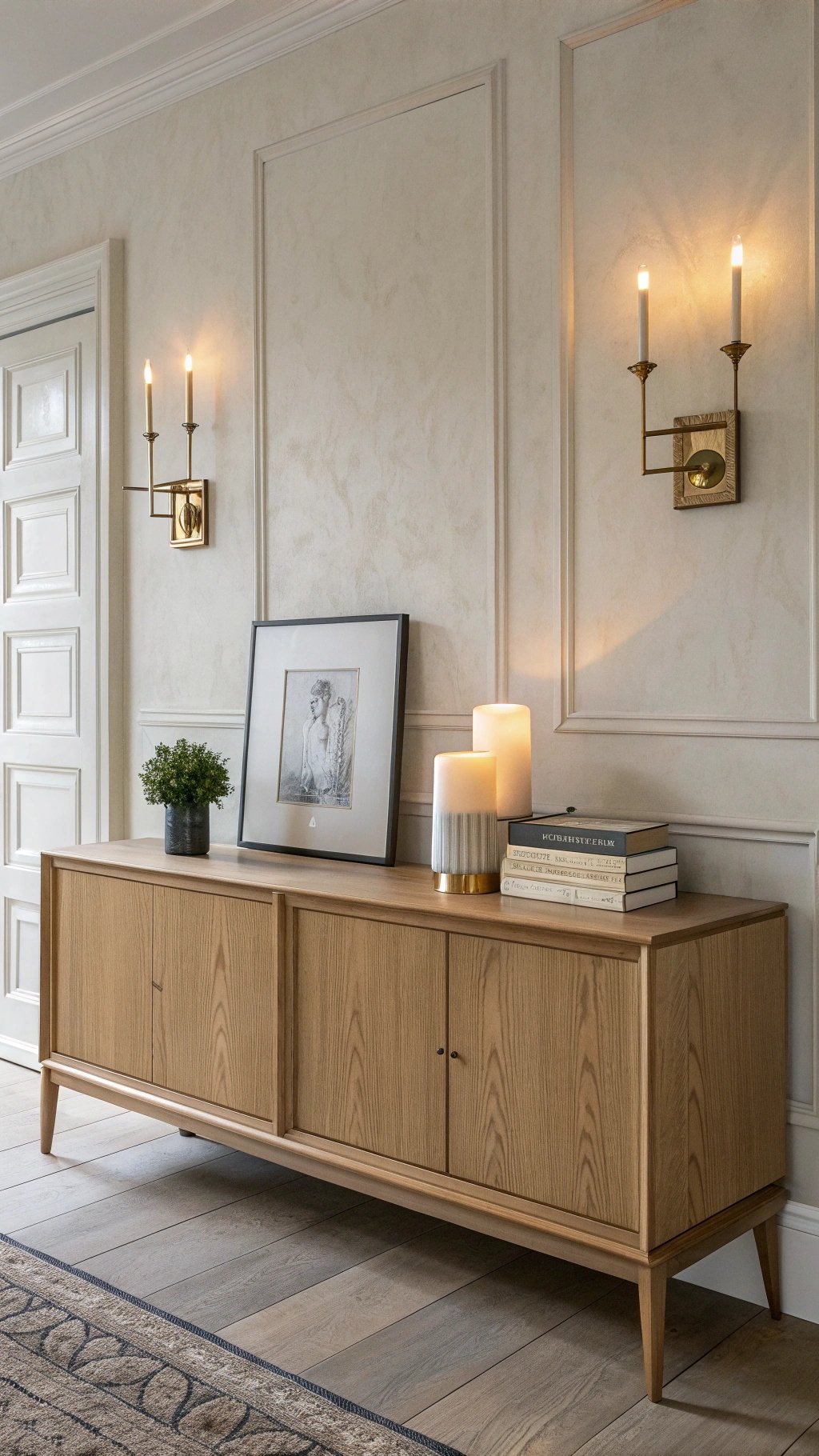
Free the floor to gain visual square footage. A floating credenza and wall-mounted sconces keep cleaning simple and underscore low, horizontal lines.
Mount a slim picture ledge at seat height to hold a few books and candles while keeping tabletops empty.
What makes something unique:
Run a discreet cable channel behind a fabric-wrapped panel so cords vanish. Specify warm 2700–3000K lamps with glare control for evening comfort.
Negative space under furniture counts as design here; it reads airy, modern, and meticulously composed.
8) Single Hero Artwork
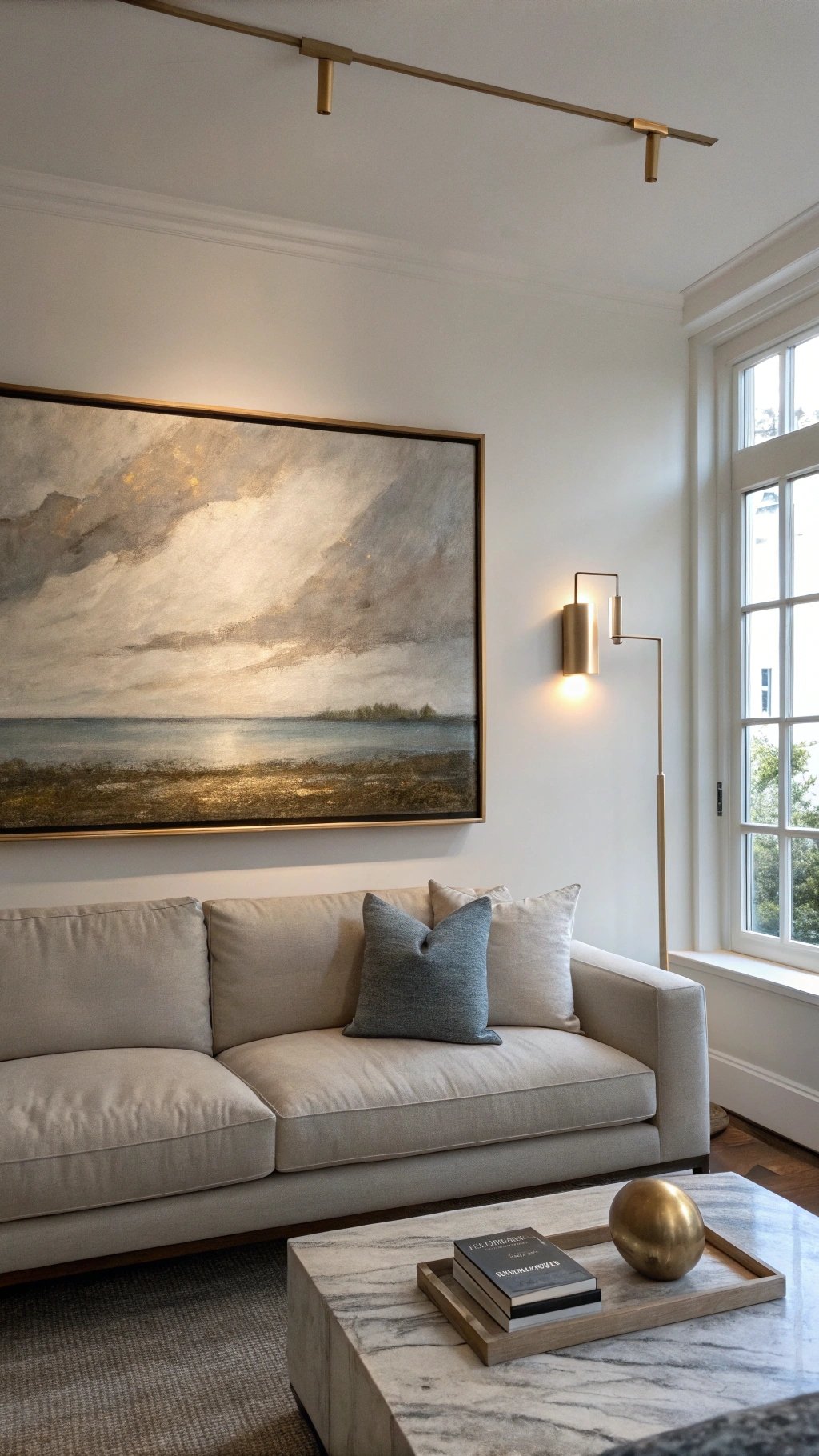
One oversized artwork above the sofa replaces a cluster of small frames and keeps the wall quiet. The generous negative space around it becomes part of the design language.
Keep the palette of the piece aligned with the room’s neutrals to avoid color clutter.
What makes something unique:
Use a micro-bezel or thin wood frame that echoes another material in the room. Add a brass picture light and keep styling beneath minimal.
This focus elevates the entire space and simplifies seasonal updates—swap one piece, transform the mood.
9) Biophilic Minimal Corner
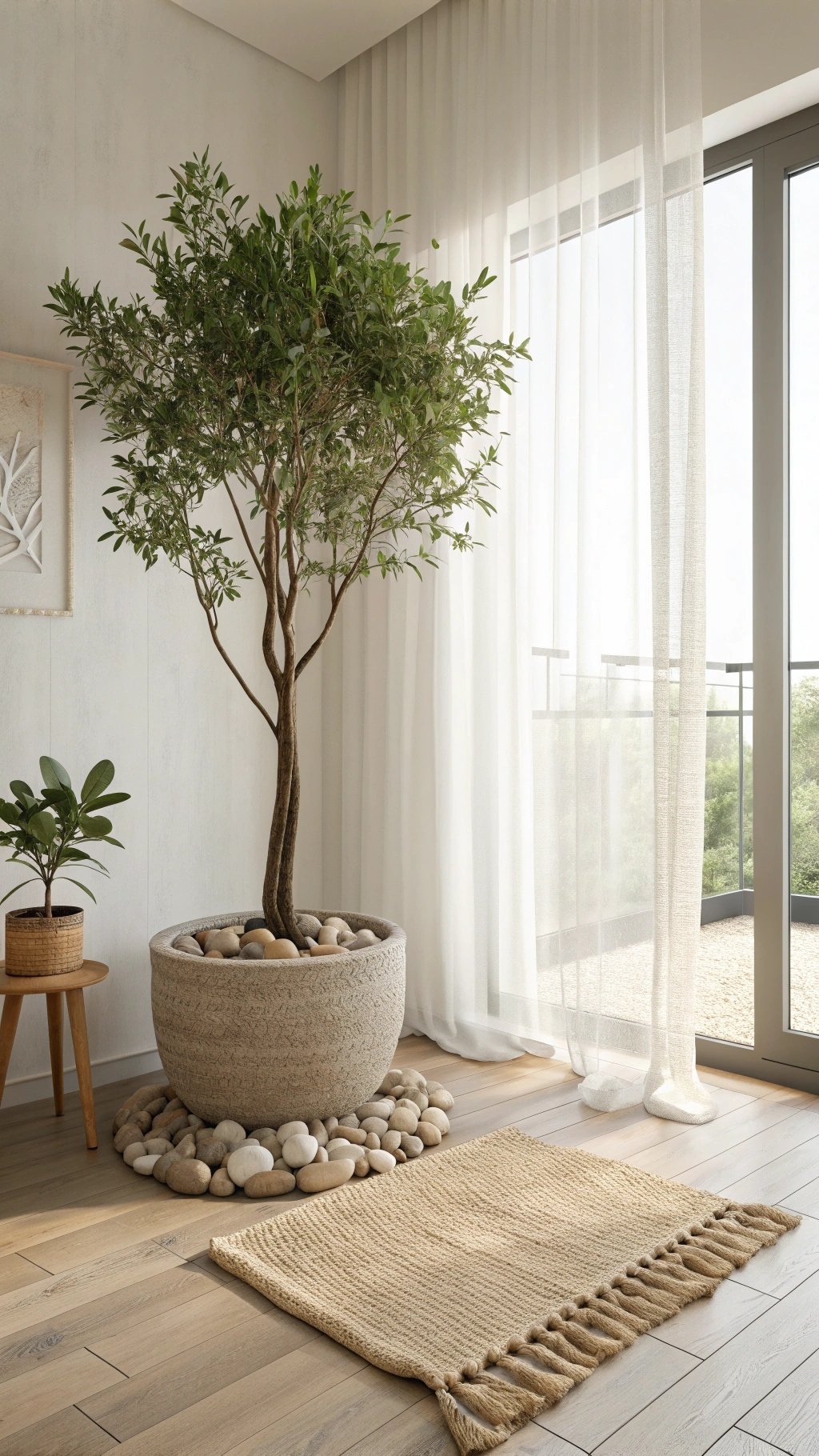
Instead of many small plants, choose one statement tree—olive, rubber, or ficus—in a matte stone planter.
Pair with a natural fiber rug, linen drapery, and a small stone side table. Fewer, larger organic gestures feel cleaner and more serene.
What makes something unique:
Position greenery to graze light and cast soft shadows. Add a tiny uplight on a timer for evening drama that doubles as mood lighting.
The plant becomes sculpture, bringing seasonal change without adding objects or visual noise to surfaces.
10) Low-Slung Conversation Zone
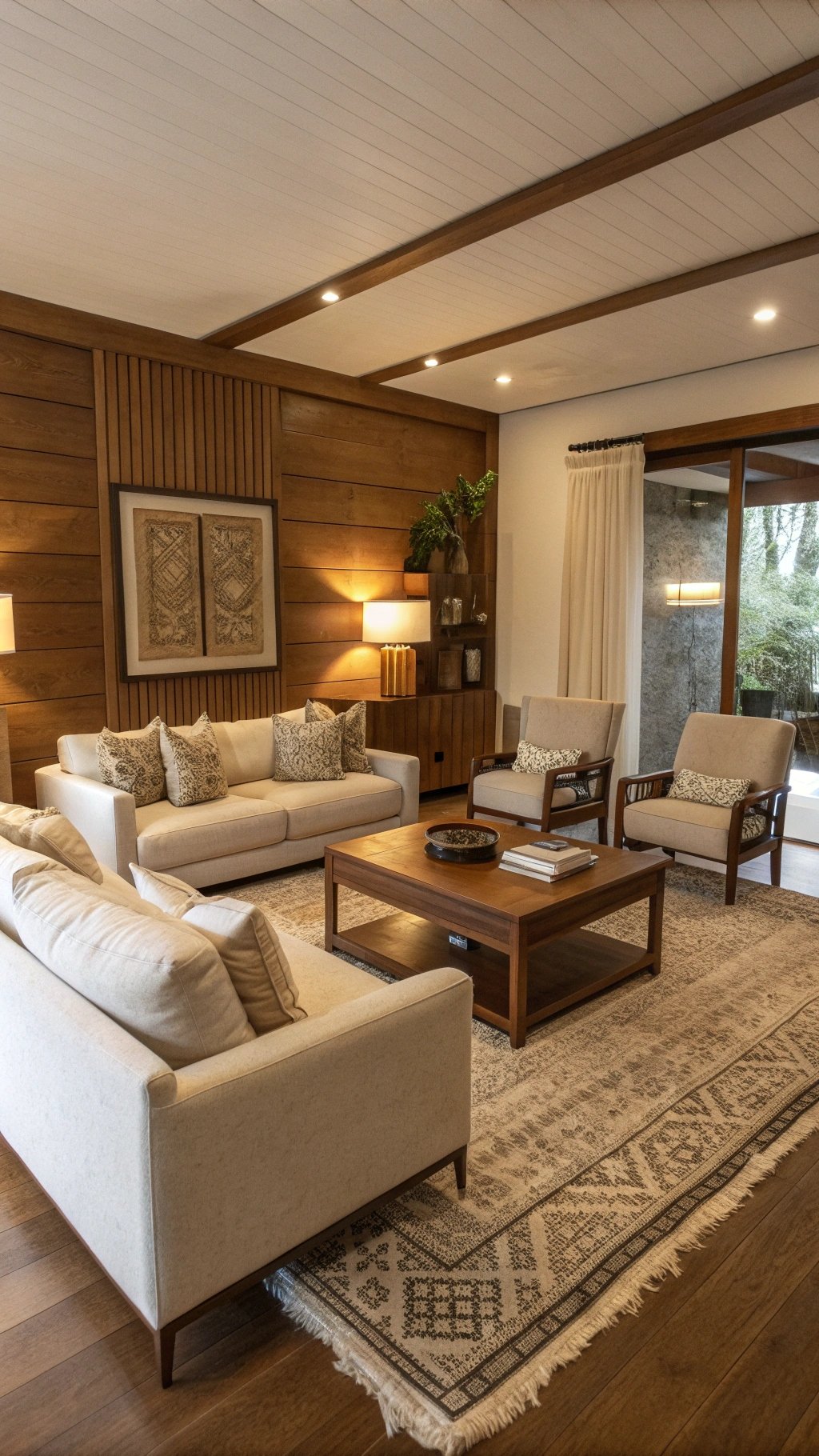
Lower profiles open sightlines and create intimacy. Use a low sofa, armless slipper chairs, and a wide low table.
Keep art small and near the seating line so the visual weight stays grounded. This arrangement excels in rooms with low ceilings or awkward windows.
What makes something unique:
Add a plush thick-pile rug to enhance the “sunken” feel without construction. A seat-height perimeter ledge holds essentials, freeing the tabletop.
The plan feels cinematic and cozy, proving minimalism can be deeply comfortable.
11) Small Living Room, Smart Minimal Plan
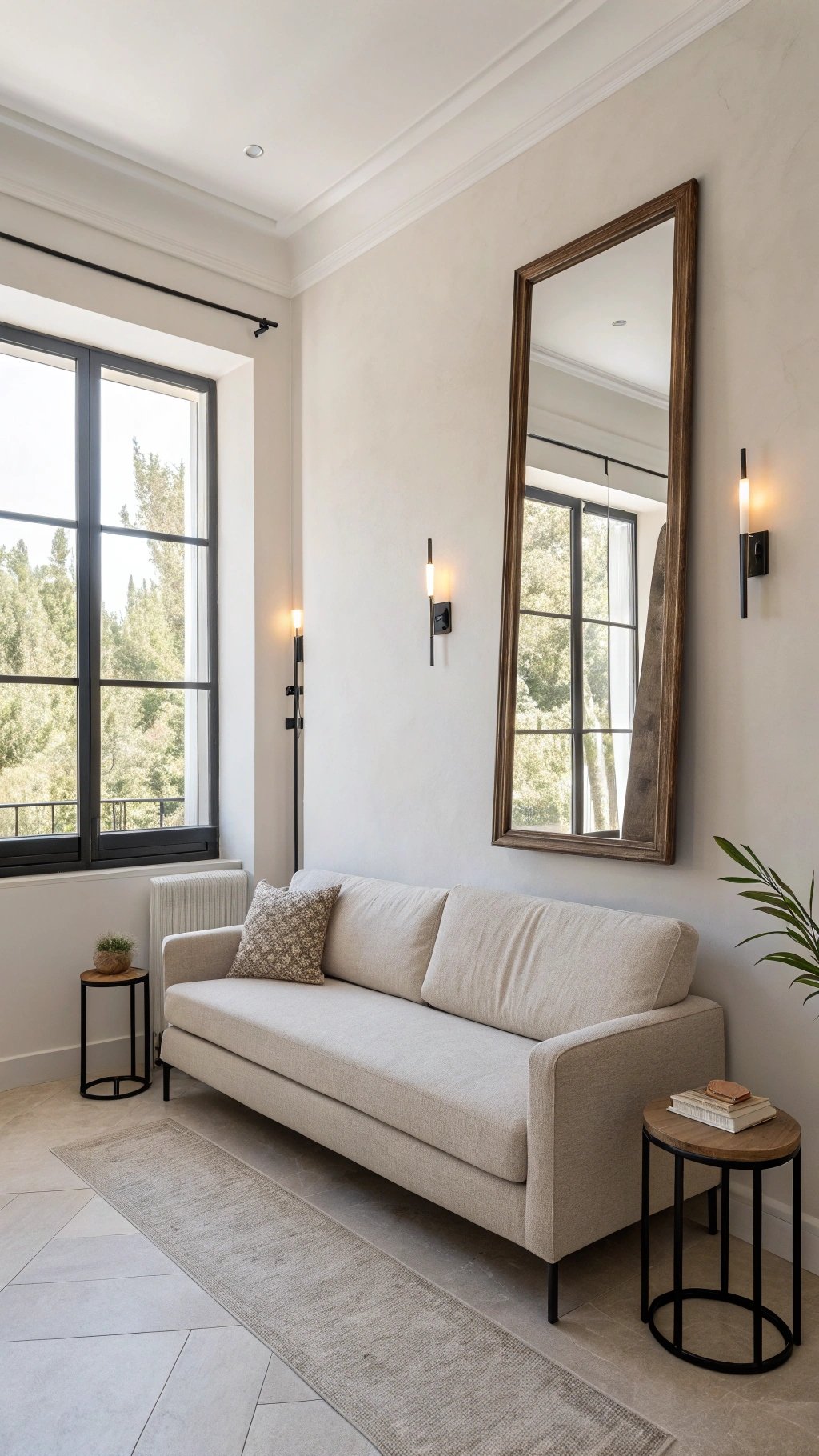
Scale is everything in modest footprints: a slim-arm sofa, nesting tables, and wall-mounted lighting to free tabletops.
Place a tall mirror opposite the window to widen the view, and choose a single large artwork to avoid scattered visual noise.
What makes something unique:
Swap swing doors for sliders or a color-matched pocket door to reclaim layout options. A shallow window bench with drawers adds seating and storage without stealing circulation. The room reads bespoke and airy, not bare.
12) Muted Color Drench
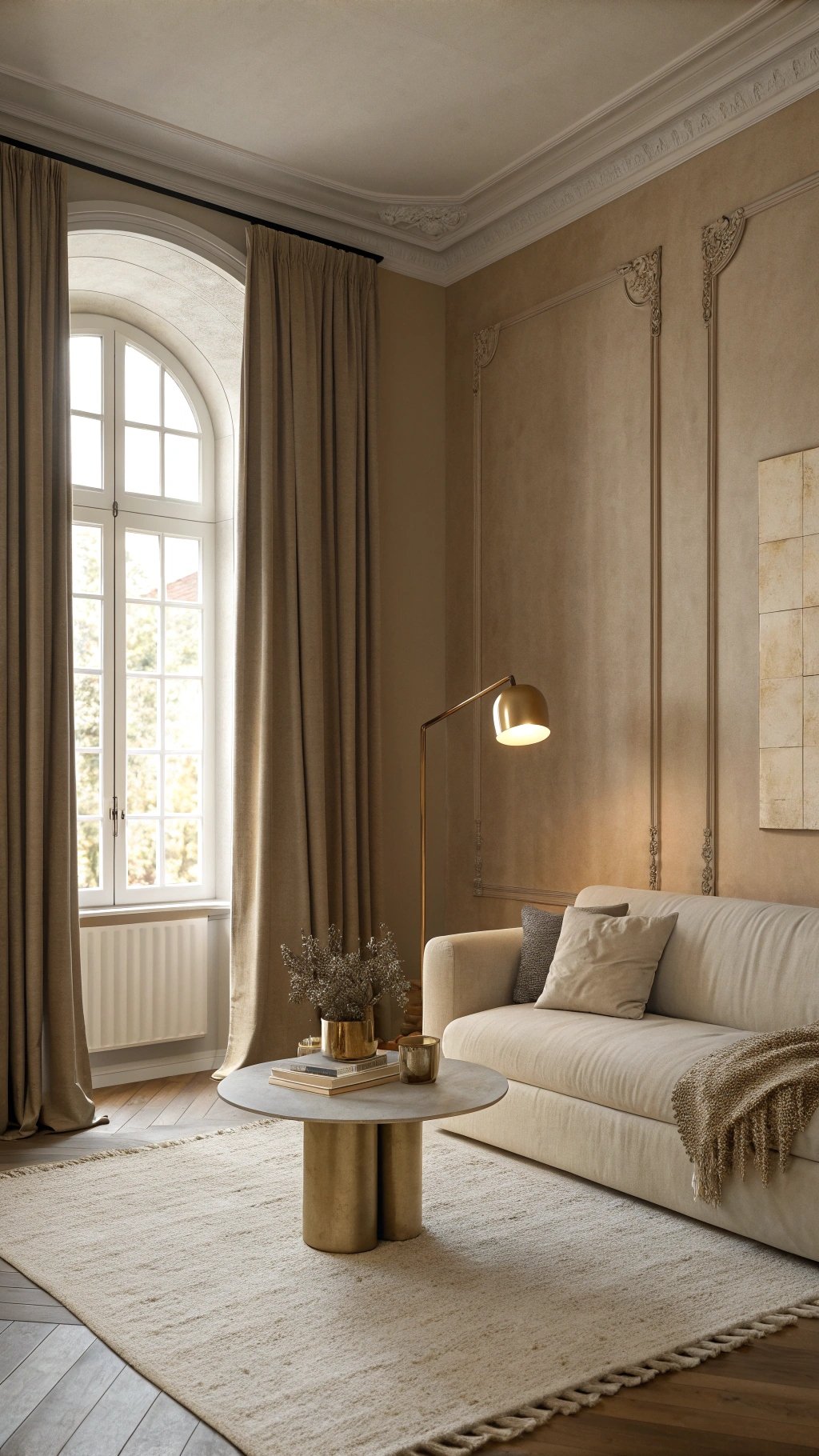
Wrap walls, drapery, and even the sofa in one sophisticated hue—mushroom, olive gray, or muted clay.
Keep contrast minimal and let materials vary: linen, wool, velvet. The monochrome envelope heightens calm and makes modest rooms feel tailored.
What makes something unique:
Play with sheen: matte wall paint, satin upholstery, velvety throw. Two or three textures in one color create richness without pattern. Add a pale stone table for lift and a single brass detail for glow.
13) Material-Led Palette: Wood, Stone, Metal
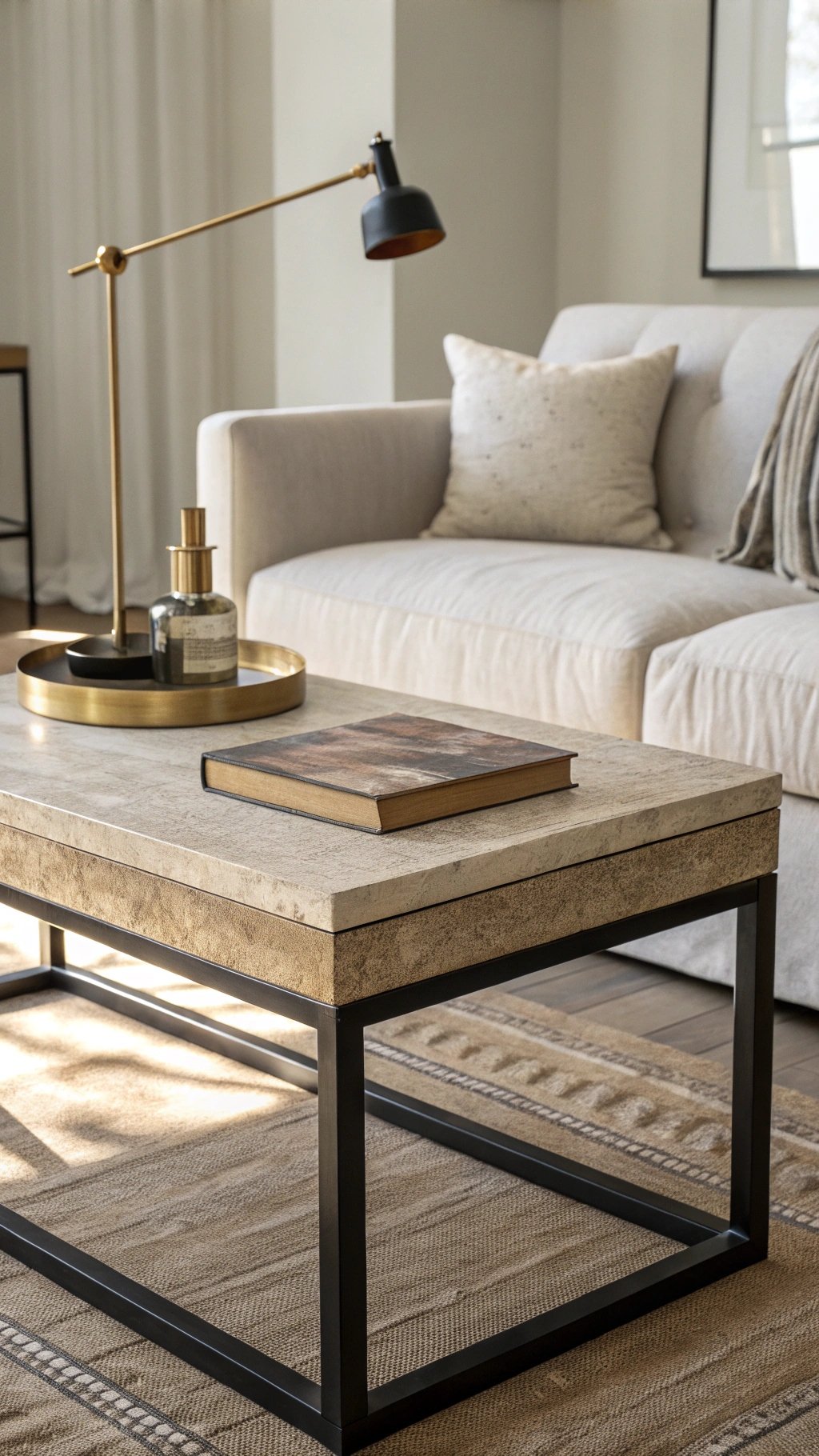
Let materials do the decorating: oak or walnut, travertine or limestone, and brushed brass or blackened steel.
Patterns are absent; grain and veining provide interest that ages gracefully. Keep the palette warm and low-sheen for understated depth.
What makes something unique:
Echo each material twice—stone tabletop and stone tray, brass picture light and brass pull, oak table and oak frame—so the mix feels deliberate.
This repetition elevates perceived quality while keeping visual information minimal.
14) Tech-Lite, Hidden Ease
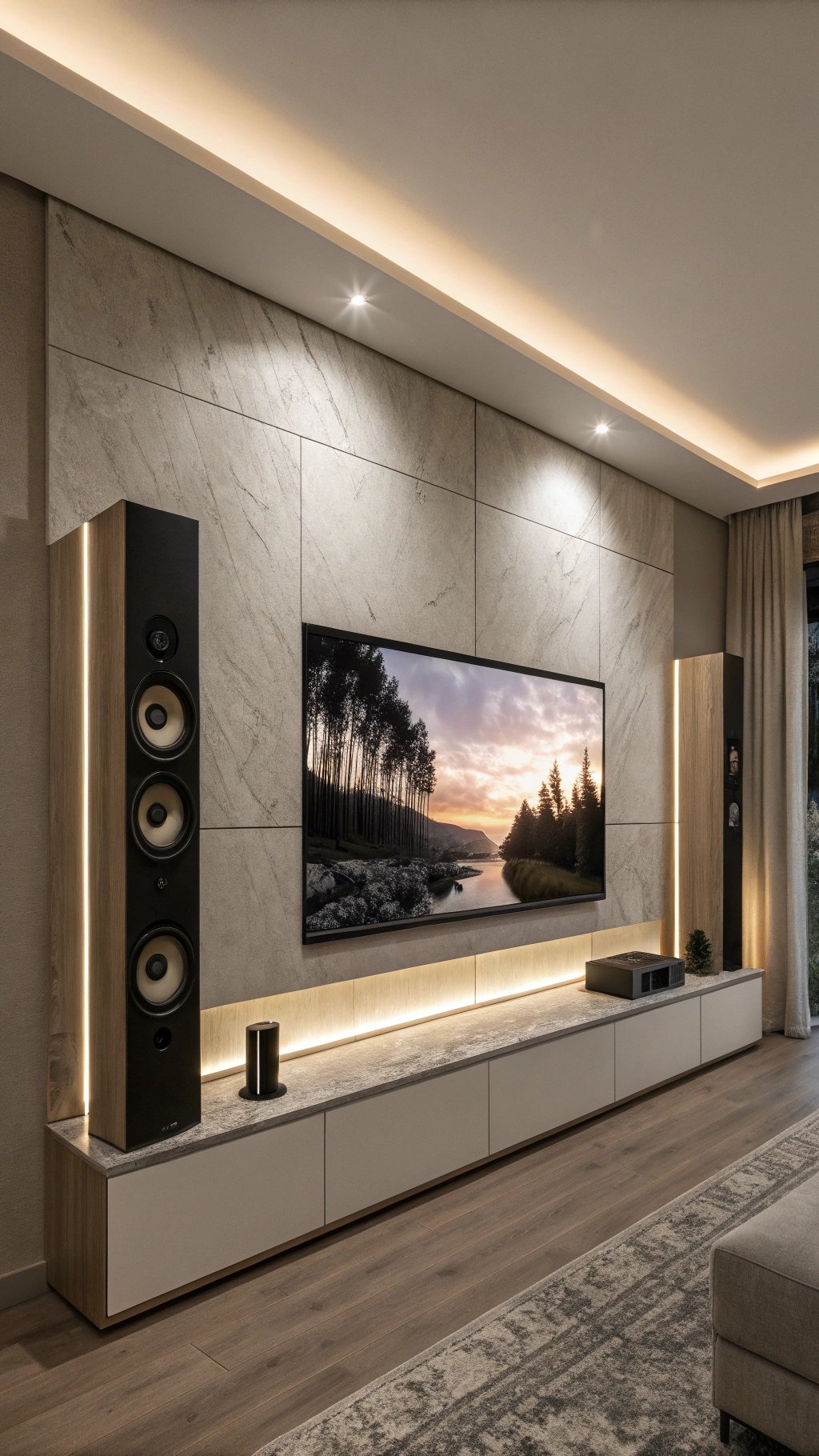
Luxury minimalism hides complexity. Conceal wiring in millwork, select in-wall speakers, and use a framed TV or short-throw projector.
A fabric-wrapped panel behind the sofa swallows cables and adds acoustic softness.
What makes something unique:
Add a motorized artwork panel that slides to reveal the screen. Edge-light the niche so the reveal feels theatrical yet unobtrusive.
The tech disappears when off, preserving the living room’s quiet hierarchy and keeping surfaces blissfully clear.
15) Sustainable Minimal Luxury
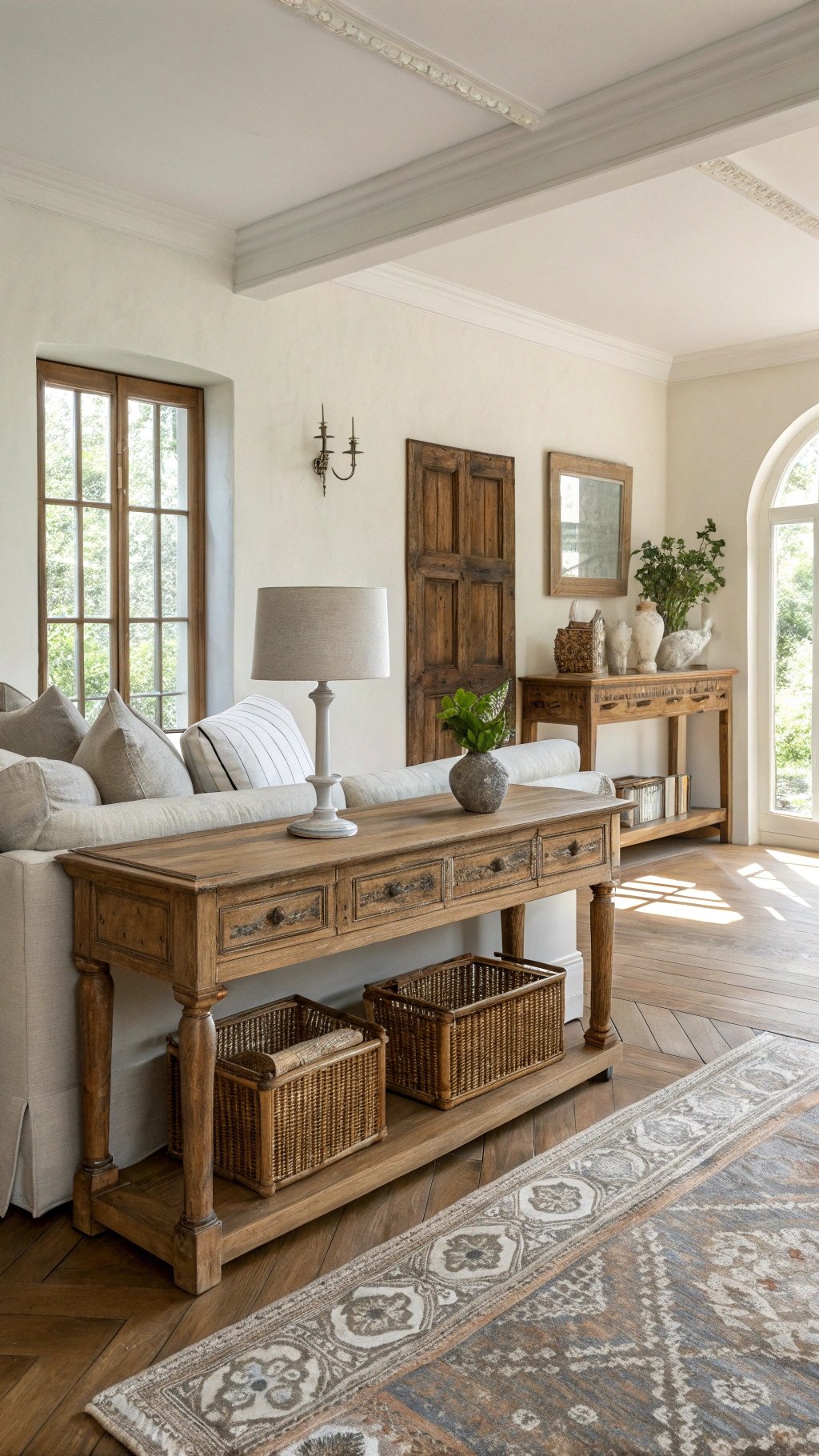
Choose low/zero-VOC finishes, FSC or reclaimed woods, wool and linen over synthetics, and durable sintered stone. High-CRI LEDs keep colors honest.
A single vintage piece adds history and reduces waste while slipcovers and replaceable cushion cores extend upholstery life.
What makes something unique:
Let sustainability show: reclaimed oak console with visible joinery, solid-brass hardware that patinas, a muted vintage rug that hides wear gracefully.
The room looks richer each year and stays easy to maintain—proof that longevity is the most luxurious finish of all.
Quick Tips to Nail a Minimalist Living Room
Pick one hero move (built-ins, color-drench, or lighting) and support it with two simple tweaks.
Standardize finishes—hardware, lamps, frames—for visual cohesion.
Edit quarterly; minimalism lasts when everything has a home and purpose.

